South Australia is home to 78 butterfly species and about 30 of them are threatened. Read on to learn about 7 butterflies – some not very well known – that are the focus of recovery work on Adelaide’s coast.
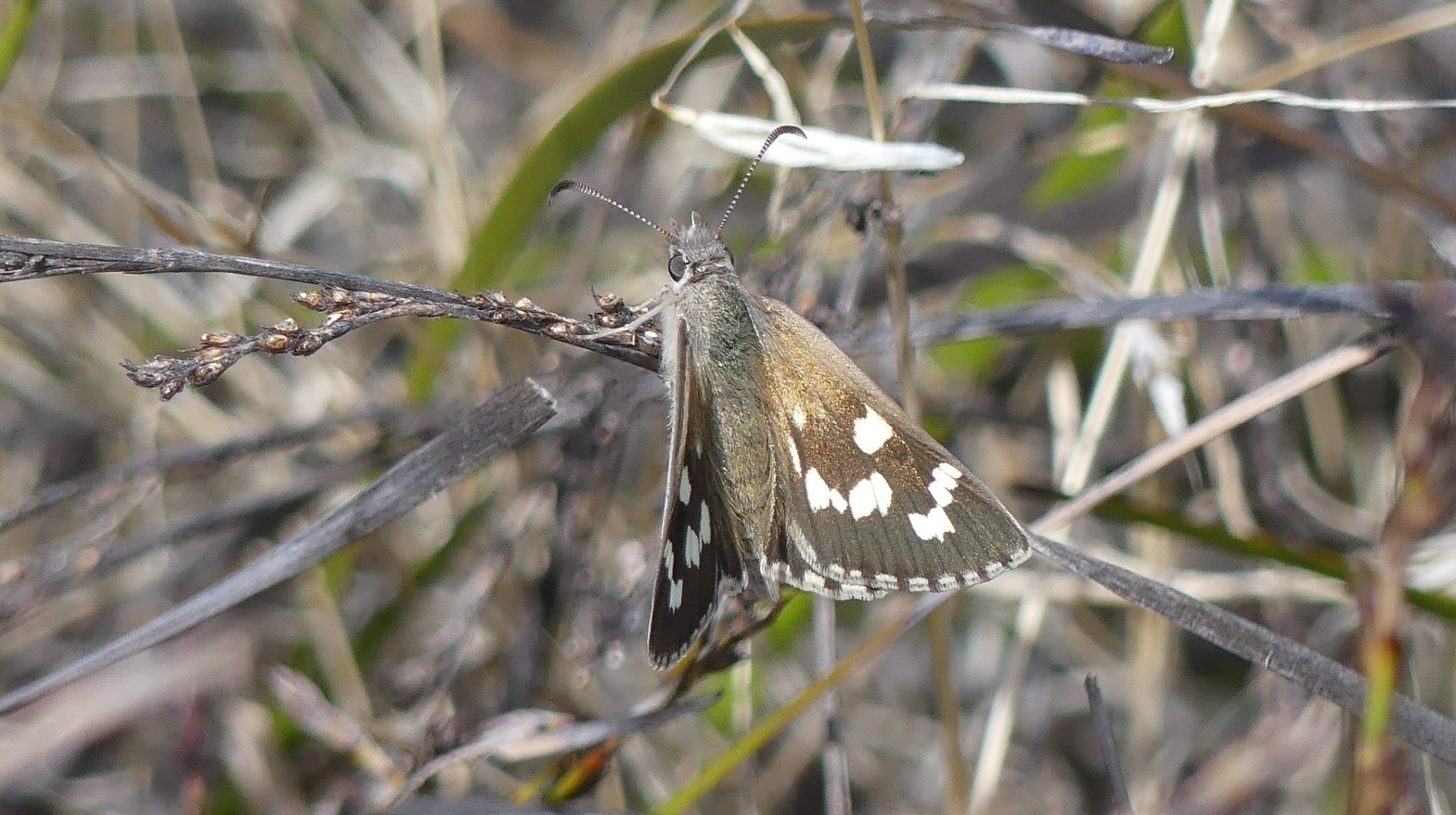
Butterflies play an important role in the environment. They help pollinate plants but are also a food source for birds and lizards.
Unfortunately, habitat loss – particularly the loss of plants that caterpillars rely on – has reduced the amount of food, homes and mates for this insect. This has put some species at risk of extinction, while others have already disappeared from our city.
Here’s all you need to know about 7 lesser-known coastal butterflies in need of a helping hand:

1. Diamond sand-skipper
When it comes to fussy eaters the diamond sand-skipper (Antipodia atralba) is right up there.
The caterpillars of this species prefer one plant – the desert saw-sedge (Gahnia lanigera) and they specifically like the fresh shoots.
What makes this a problem is that there isn’t a lot of saw-sedge on Adelaide’s coast. It’s also very hard to propagate to then be able to revegetate, so improving habitat for these skippers is difficult.
The size of the butterfly population is directly impacted by how many desert saw-sedges with fresh shoots are available for the caterpillars to munch on.

The diamond sand skipper population in Adelaide is stable, but because of the species’ reliance on the desert saw-sedge, it’s a species in need of attention – to hopefully prevent it becoming threatened.
To help, we’ve been out on the lookout for these butterflies and recording where they’re living and the size of their population.
We’re also looking after the small patches of desert saw-sedge found on our coast. We’re working out how best to grow more of this tricky plant so we increase the diamond sand skipper’s habitat.
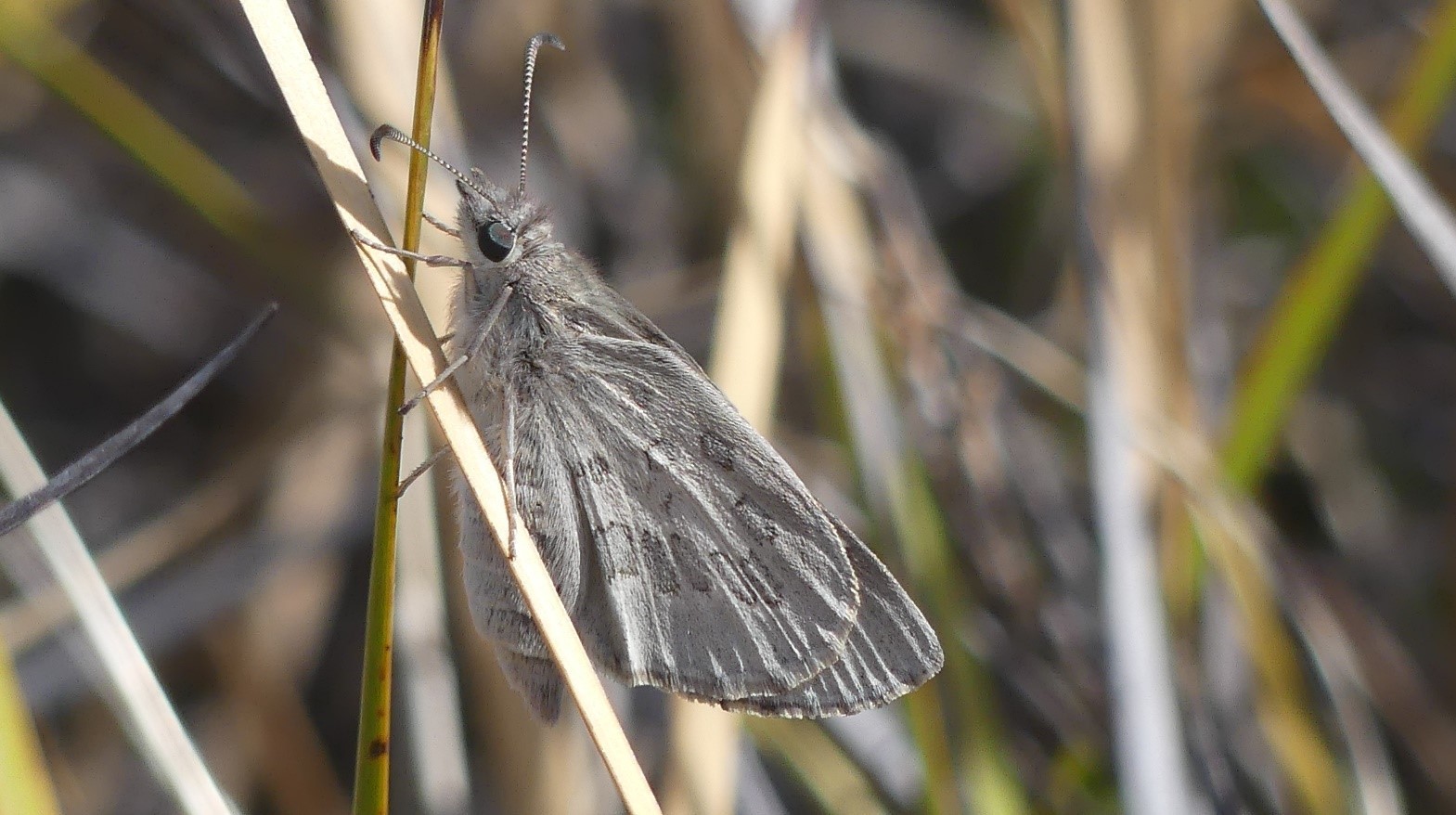
2. Mottled grass skipper
The mottled grass skipper (Anisynta cynone cynone) is not so fussy. It likes to dine on native grasses such as coastal tussock grass (Poa poiformis var. poiformis) and spear grass (Austrostipa spp.)
It’s will also eat introduced species like couch (Cynodon dactylon) and kikuyu grass (Cenchrus clandestinus) but needs large patches – bigger than the average lawn – that are uncut. Well-manicured lawns unfortunately won’t cut it – pun intended.
These grasses are in large supply, but unfortunately this has not translated to booming mottled grass skipper numbers.
Habitat quality and fragmentation – essentially habitat being broken up into little, disconnected bits – make this butterfly vulnerable in Adelaide.
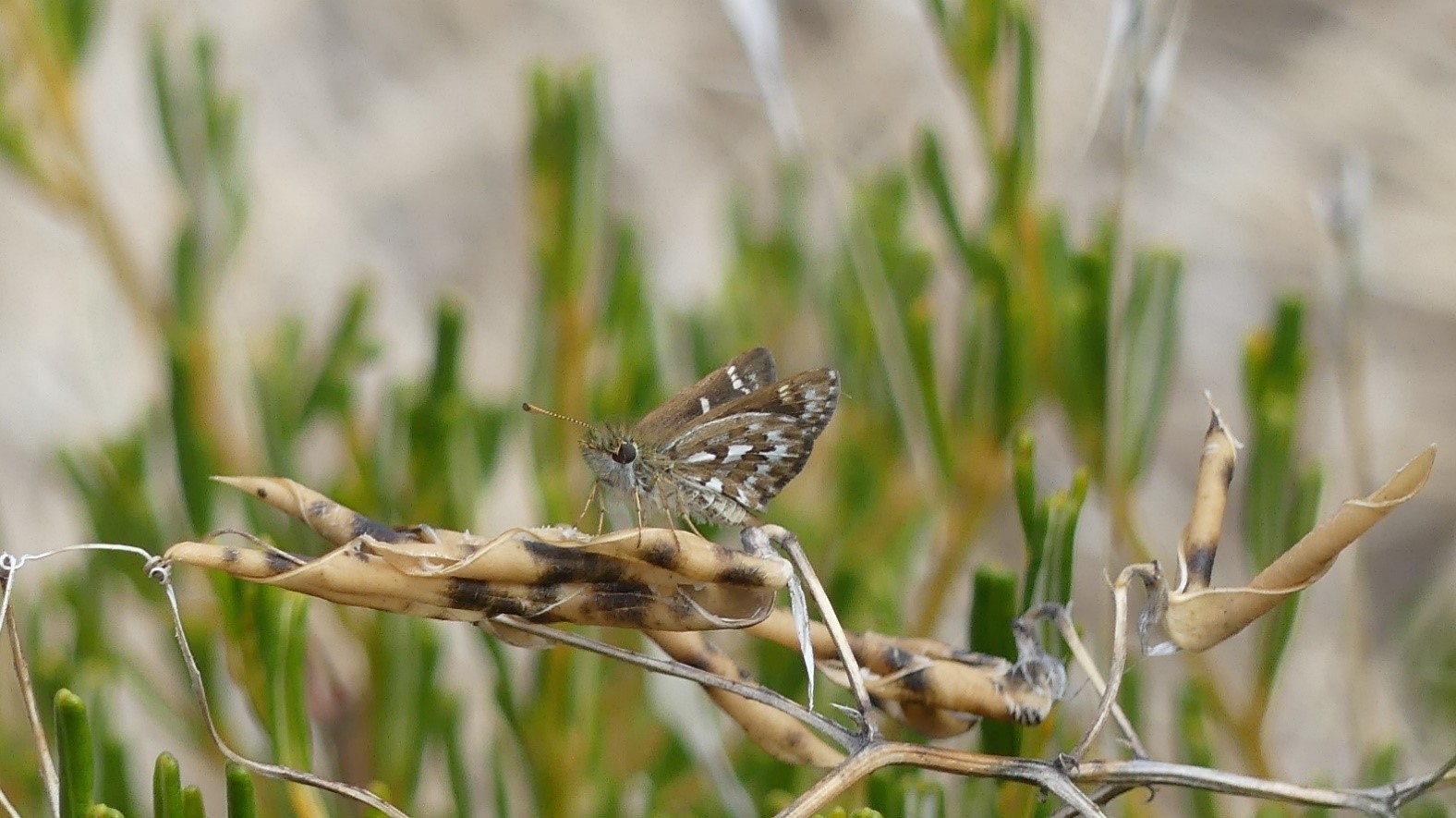
In recent times, it has only been spotted at 3 locations along the coast but we’re hoping – and looking – for more.
This species only has a short butterfly stage though. Their life as a caterpillar is longer, which makes them particularly hard to spot.
Autumn rain is also a critical part of this butterfly’s life cycle because it helps the caterpillars hatch!
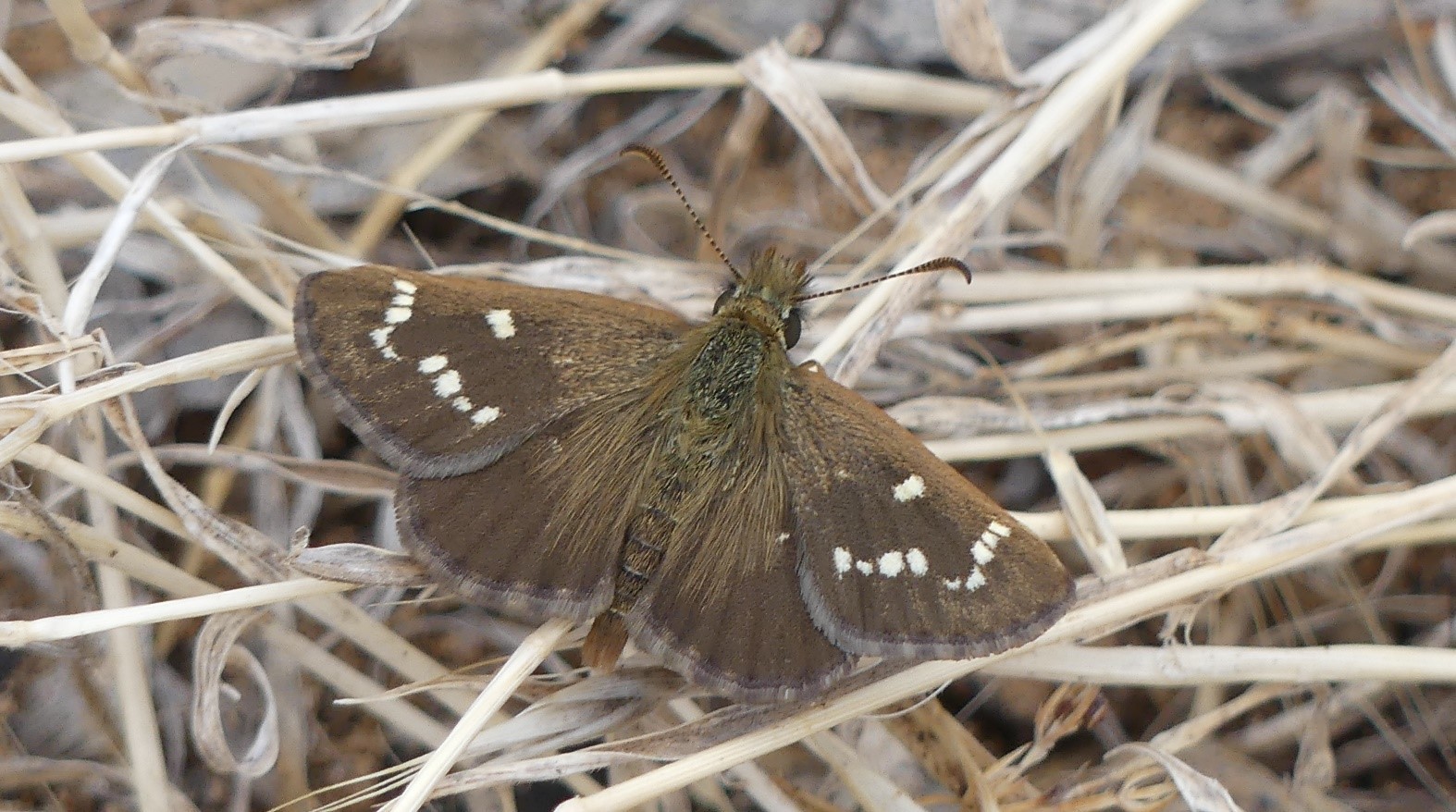
3. Southern purple azure
Thanks to Disney’sTarzan, the idea of being raised by apes doesn’t seem all that strange (it just results in the ability to talk to animals and surprisingly good dance skills!) – but being brought up by ants, now that might be a little more unusual. But, this is all the southern purple azure butterfly (Ogyris genoveva) knows.
Sugar ants (Camponotus consobrinus) are the guardians of these caterpillars. The ants do it because they like to eat the sugary substance discharged by the caterpillars… let’s not think too hard about that.
Because of this relationship, southern purple azure butterflies will not lay their eggs anywhere the sugar ants aren’t found.
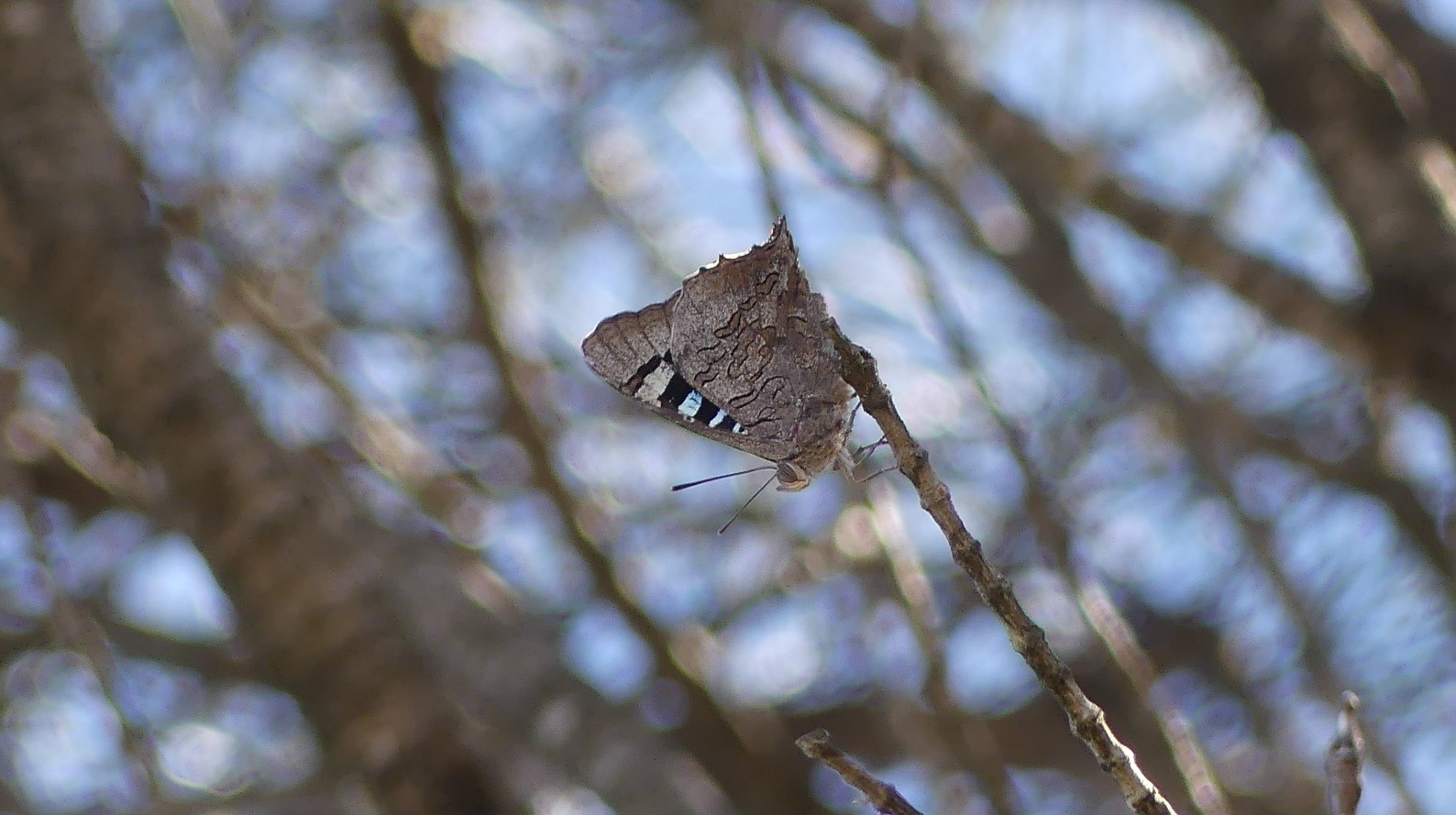
Purple azures are rare in Adelaide. Their numbers have declined because of habitat loss and fragmentation.
Aside from a healthy supply of the right ants, the caterpillars of this species need access to box mistletoe (Amyema miquelii) to feast upon. Of course, there are no butterflies without caterpillars.
If you spot box mistletoe at home, ignore mistletoe’s slanderous reputation as a tree-killer and consider leaving it there for the butterflies.
To help boost the purple azures’ habitat, we’ve been out conducting surveys – i.e. looking for and recording – where we think there might be suitable habitat, with mistletoe.
This will give us a better idea of where the butterfly is found and what food sources are available for them. It also give us a better understanding about mistletoe, which is central to conserving this and many other butterfly species.

4. Golden-haired sedge skipper
Picturing a sparkling gold butterfly, or one with golden blonde locks? ‘Fraid not.
Unfortunately, the golden-haired sedge skipper (Hesperilla chrysotricha) is considered extremely vulnerable in the our region though and may have even become locally extinct on our coast, as a result of habitat loss.
We’re working on ensuring the golden butterfly myth doesn’t take off though by looking at the distribution (where the butterfly is found) and habitat available for it around Adelaide, and then considering whether it can be reintroduced from healthy populations elsewhere.
This butterfly eats several plant species of Gahnia, including Gahnia trifida (coastal saw-sedge), which we’re looking at introducing to a number of sites on the Adelaide coast, to help with the possible reintroduction of these skippers.
The plants alone are not enough though – they also need to planted somewhere sunny, can’t be too crowded, must have clear ground around them, and be in well-hydrated soil. It’s really a case of getting things just right.

5. Yellowish sedge-skipper
The yellowish sedge-skipper (Hesperilla flavescens) disappeared from metropolitan Adelaide over 30 years ago.
The reason: the number one home and food sources for its caterpillars, thatching grass (Gahnia filum), was cleared for urban and horticultural development – and this species couldn’t survive without it.
Fast forward many targeted thatching grass plantings later, and yellowish sedge-skippers have been successfully rewilded in Adelaide, contributing to our status as a National Park City.
These skippers aren’t out of the woods – or grass – yet though. While some populations have taken hold at the sites they’ve been reintroduced to, others have not, meaning that more releases are required.
The caterpillars also prefer fresh shoots, so maintaining replanted thatching grass using fire – i.e. ecological burns – and slashing is also necessary to keep them happy.

6. Bitterbush blue
The bitterbush blue butterfly (Theclinesthes albocinctus) can be found across South Australia but, as with many of these other species, it’s fussy and you’ll only spot is where plants from the Adriana family are found.
On the Adelaide coast, its plant of choice is Adriana quadripartita, aka coastal bitterbush.
Unfortunately, this butterfly had largely disappeared from the Adelaide coast too. Reintroducing it has been part of our program to create a more butterfly-friendly city and the Adelaide National Park city movement.
To help make this possible, councils and coastal community groups are including Adriana in revegetation, so that reintroduced butterflies have more suitable habitat available to them.
Bitterbush blue butterflies that are found on the coast are a blue colour form – perhaps not unexpectedly – but butterflies of the same species found inland are brown form.
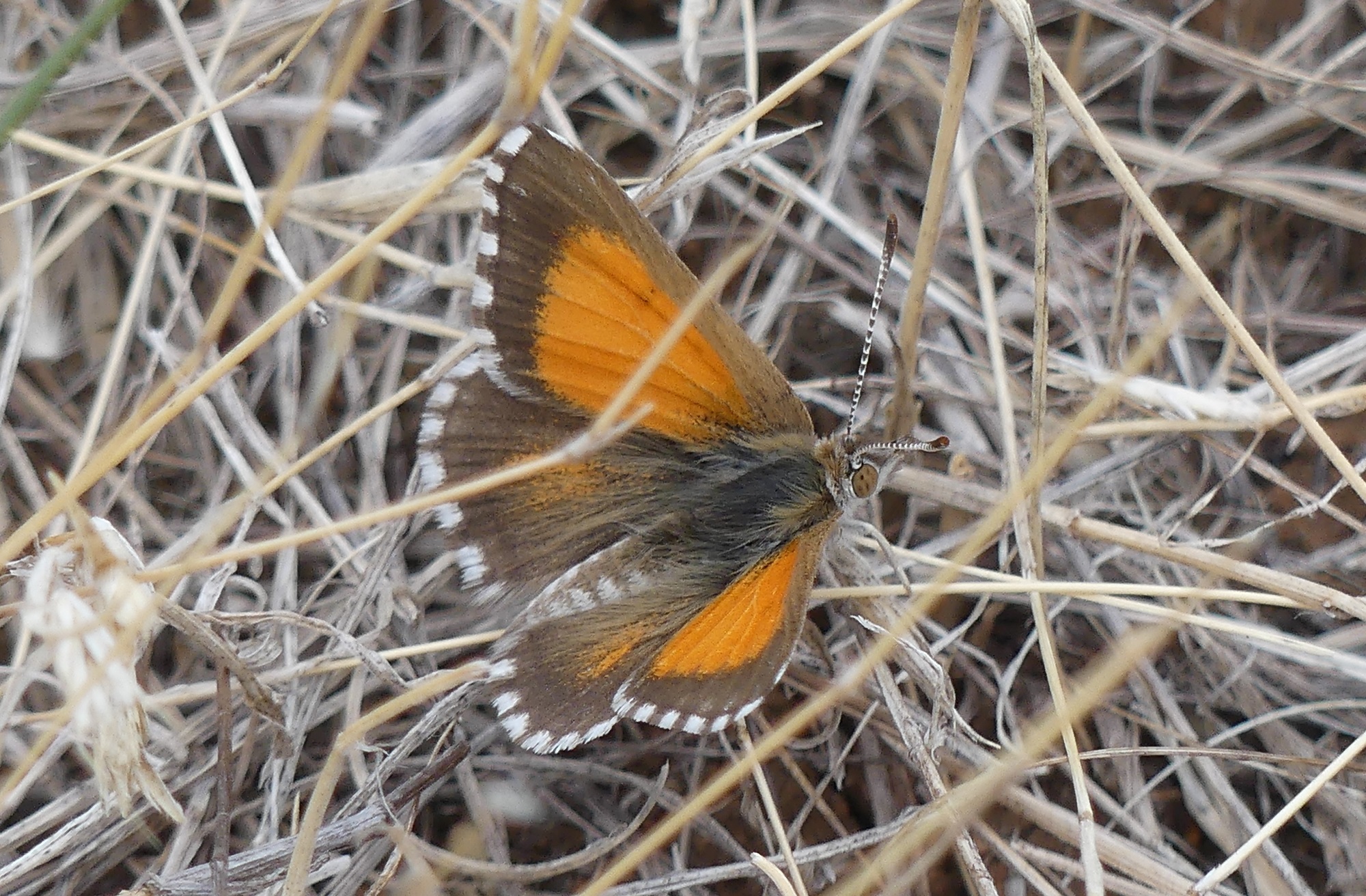
7. Chequered copper
The chequered copper butterfly (Lucia limbaria) is found across a large section of the state – from the Flinders Ranges to the Mount Lofty Ranges and across to the lower south-east.
It was thought to be locally extinct after it hadn’t been seen here in Adelaide for more than 60 years – but then it was then spotted in the parklands back in 2011.
This discovery in the parklands and then others across a few metropolitan sites has reignited a strong desire to protect this butterfly.
Now, we’re working on finding out where exactly these butterflies are and what habitat is available for them. Fingers crossed we will find them on the coast.
Chequered coppers rely on Oxalis plants for survival because they provide food for the caterpillars. Like many of the butterflies in this list, without the plants they rely on – known as host plants – there are no chequered copper butterflies.
This butterfly will eat both native and introduced Oxalis, with its favourite being native sorrel (Oxalis perennans).
This species is similar to the well-known sour sob but tends to be a smaller size plant and its yellow flowers are also smaller.
One way to help this butterfly is by checking closely whenever you’re removing what you think is the weedy sour sob.
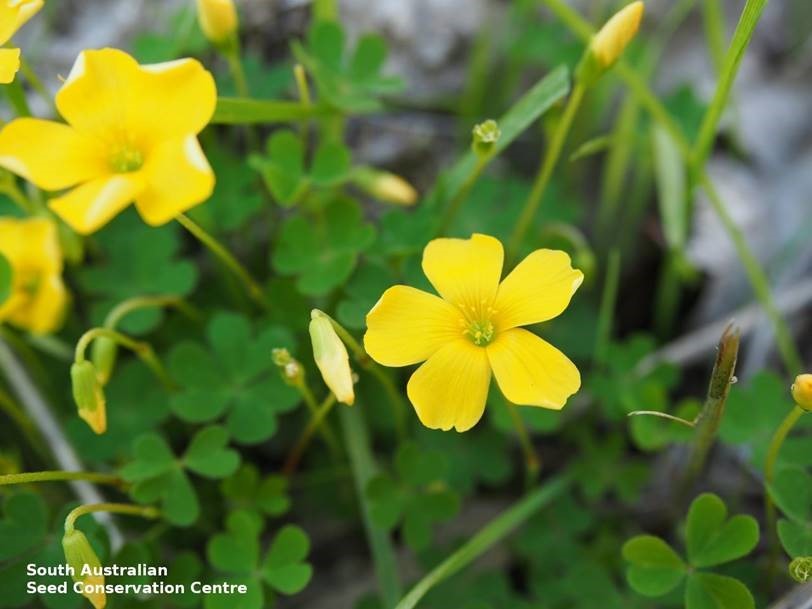
Chequered coppers also have an important and interesting relationship with attendant ants (Iridomyrex rufoniger), which you can learn about in this video.
How you can help
You can help by learning how to transform your garden into a wonderland for butterflies.
Some of our threatened butterflies, like the ones in this story, require large-scale habitat restoration to thrive.
However, even planting the species they rely on – like Gahnia filum – in your garden can help start a conversation about native butterflies, while undoubtedly creating habitat for other local wildlife.
To get involved in a larger-scale habitat project along the coast, join one of the dedicated and passionate volunteer groups working along the coast – just look for the green dots on this map.
This story was originally published on 10 February 2022 as ‘Discover 4 lesser-known butterflies getting a helping hand on the coast’ and has been updated with extra information.